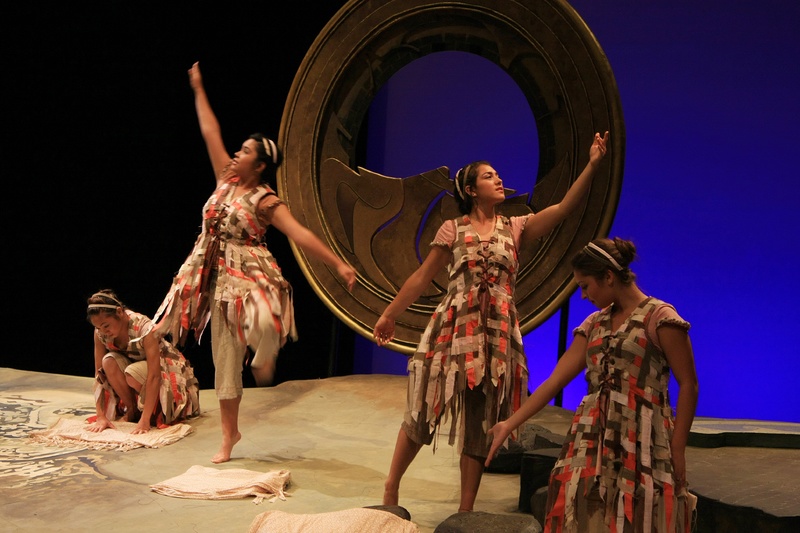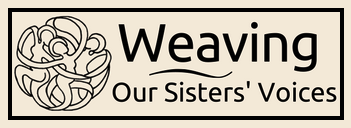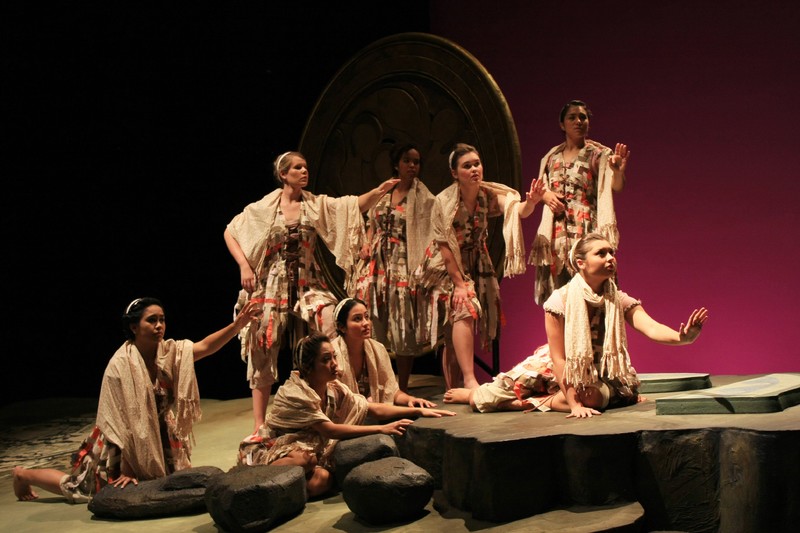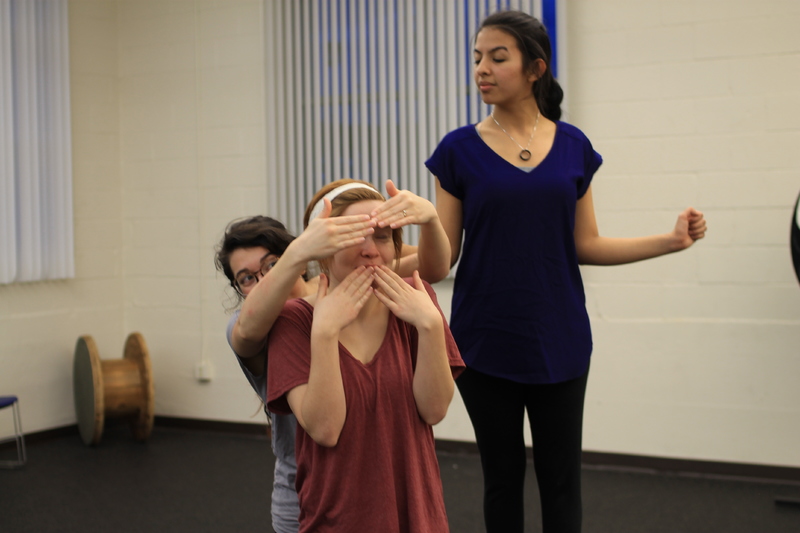Honoring Voices of Men
We know that women’s voices do make a difference, but we could not omit the fact that men were part of these stories too. I wondered how that might work in a performance.
The script for Weaving Our Sisters’ Voices has a number of men whose lines are integral in the story.
The Levite: Get Up! Get up, we’re leaving!
Jesus: Who Touched me? Daughter, your faith has made you well. Go in peace.
Judah: She is more in the right than I since I did not give her to my son Shelah
(WSV The Conflict, Risk-Taking, Courage)
There are not very many men’s lines, so I have considered casting a man to play all of the roles. But I was concerned with an odd dynamic that might be created within an ensemble production of this subject matter. It felt wrong to have a ‘token’ male, but it also didn’t feel right for the female actors to perform male roles. I knew there had to be other ways to represent those other male characters existing in the script. I thought of having a male actor off stage just speaking the lines, much like Zack in A Chorus Line. At first the audience only hears him barking out orders, but then he enters the stage and becomes a character. This puts a lot of weight on him as a character, which is appropriate for A Chorus Line as he is casting the company and has a status in that. By having male voices off stage it put a strange weight on them, and it that felt unfair and awkward as well. As a director, one of my key values is that I am very cognizant of using my performer’s time appropriately, not only out of respect, but because I know it creates a better cast dynamic and rehearsal environment. If I cast a male to just stand off stage and interject a line now and again, it seemed not only unfair but emphasizing the roles. In the end, I decided to use a recorded male voice. We used the same recordings for the 2006 Tour and the 2010 Production, but re-recorded with an actor with a more mature voice for the 2015 Production.
Using a new voice for the 2015 production added some challenges. Prior to auditions, I had hired a professional actor who happened to be the spouse of our costume professor. He did a fantastic job of preparing and capturing different voices for the different characters represented in the script. We met with a professor in the Broadcasting Department and recorded one afternoon. We would try a line and the technician would set levels while I coached Josh on the intention of various moments.
The recording solved the spoken male lines, but did not solve the fact that there wasn’t an actual person on stage. Depending on the needs of the story I found various solutions. Sometimes we were able to create the illusion of the male character through acting as though they saw other people in the room. Other times it was symbolically represented by a movement or shift in stance. This was challenging but very interesting work. In all three productions its success was uncertain and met with a variety of reactions from audience members.
"There was one part of the performance that felt disjointed – the pre-recorded male voice. For a performance that was designed and written to highlight women’s voices, it was odd that the one male voice stood out. It had a different sound and feel to the delivery - the actresses portrayed biblical women with stories relatable for everyday females, but the recorded voice almost had an omnipotent or ethereal vibe. The way the women stopped and listened, you could tell this bodiless voice had the power."
– Brenda Warrington, audience member 2015
I agree, but I am not 100% sure how to solve it. For the 2015 Production, we did have more of the women actually say the male lines. For example:
Both Aaron and I complained: Aaron said ‘Has the LORD spoken only through Moses?’ And I said ‘has he not spoken through us also?’
WSV Confidence
When the 2015 production was responded to for the Kennedy Center American College Theatre Festival by Jeff Sanders a director at Eastern Washington University, he noted that the live music was effective and not instrusive, but felt the recorded music and voice-overs pulled the audience out of the experience. He commented that everything else was so “organic and earthy” the recorded didn’t seem to mesh.
I believe our use of the voice over was an effective solution to the challenge of the male characters. I do, however, look forward to seeing a production in which they don’t use the recorded voice. With each living performance of Weaving Our Sisters’ Voices, choices will need to be made in how to use live male actors or the recorded voice. It will be interesting to see equally or even more successful experimentations with this challenge. So again, this emphasizes the notion of this script continuing to evolve and be reinterpreted.
Back at the time of writing the script together, Dr. Linda Schearing and I realized that in many ways the males involved in the various stories did not show themselves in great light regardless of if they were illustrated with acting or voice over. We did not, however, want this to ever be perceived as a “male bashing” show. It was important to us that there was also the inclusion of healthy and loving relationships. Linda suggested The Shulamite Woman in Song of Songs. This beautiful piece helps paint a picture of mutual and respectful love between two lovers and it helps propel the second third of the show. And, this is a scene in which the recorded male voice is almost imperative. This story has two sections of poetry in which they speak of the other’s virtues. The language is quite poetic from another time:
My lover whispered to me:LOVER: How beautiful, you are, my beloved, how beautiful!Your eyes behind your veil are like doves.Your hair falls in waves, like a flock of goats frisking down the slopes of GileadWSV Shulamite Woman
Wow! Flocks of goats frisking! Quite fun language, but the artistic choice I made with all three productions was to abstract that expression of love through dance.

Celebrating their beauty as expressed in the Song of Solomon, 2015.
Photo courtesy of Leslie Stamoolis and Courtney Smith
In the Shulamite Woman, all of the performers speak of their love for their partner. It helped to emphasize the universal love of mutually respectful relationships. It was also theatrically a good break in the action, after a number of “solo” stories, to bring back the unified company. The production begins with all of the performers embodying the Levite’s Concubine, so the counterpoint of having them embody a loving relationship is important.
Layering the male voice over a music score for the Shulamite Woman really brought the strength of storytelling, dance and music together. In Weaving Our Sisters’ Voices, the focus is certainly on the voices of the women, but we cannot not deny the male voice completely. The recorded male voice was both a solution and a challenge.
Suzanne Ostersmith


